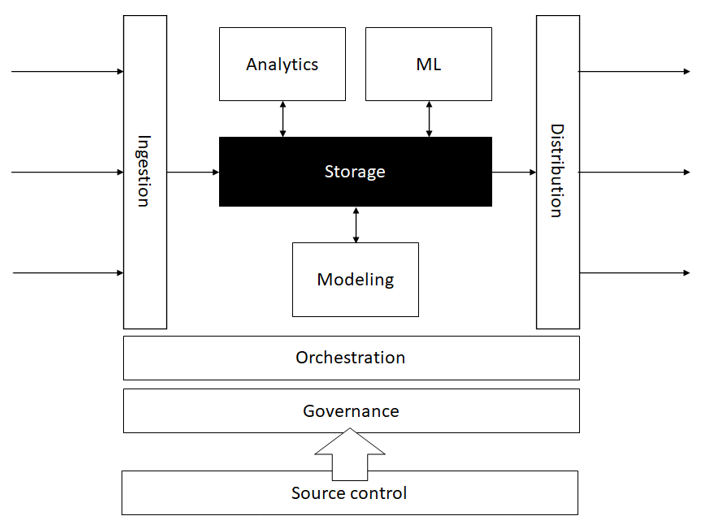2 Storage
In this chapter:
- Storing data in a data platform.
- Using Azure Data Explorer for ingestion and analytics.
- Using Azure Data Lake Storage for big data storage.
- Applying data ingestion patterns.
Data storage is the core piece of a data platform, around which everything else is built. Figure 2.1 recaps the high-level view from chapter 1, highlighting the component discussed in this chapter.
Figure 2.1 Storage is the core piece of a data platform around which everything else is built.

We will talk about storage solutions and tradeoffs, introduce two Azure services which we will use, and how they integrate.
Data moves continuously in and out of the data platform. In this chapter we will focus on storage, and the need to accommodate multiple storage solutions, both external and inside the data platform. We will sketch out the storage layer of our data platform, then stand up the corresponding Azure services.
We will deploy an Azure Data Explorer cluster, Microsoft’s big data analytics platform. We will create a table, ingest some data into it, then we’ll look at a few basics KQL queries, the Kusto Query Language used by Azure Data Explorer.
Next, we’ll configure an Azure Data Lake Storage instance, the highly scalable data lake solution. We’ll see how we can upload data to the data lake, and some of the integration options with Azure Data Explorer: we’ll export data from Azure Data Explorer then we will read it back as an external table.